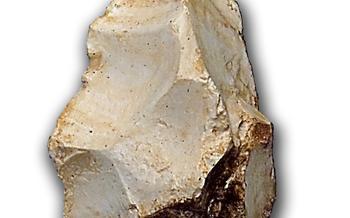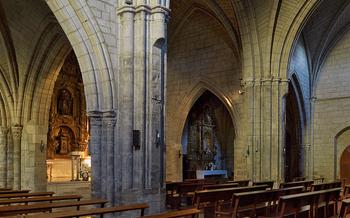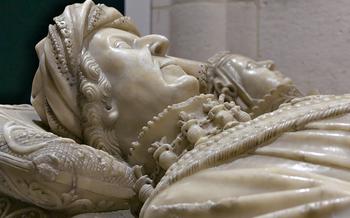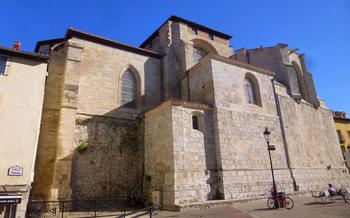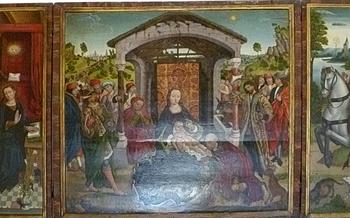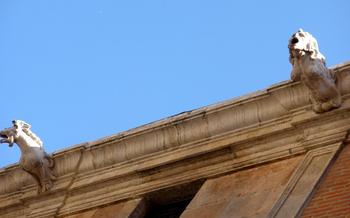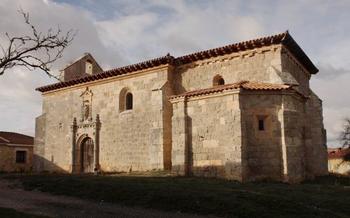
Museo de la Evolución Humana
- Museo de la Evolución Humana (MEH): A Journey Through Human Origins
- A Timeless Journey: Exploring the Permanent Exhibitions
- Temporary Exhibitions: A Window into Current Research
- Research Center: A Hub of Scientific Discovery
- Library and Documentation Center: A Treasure Trove of Knowledge
- Guided Tours: Unveiling Hidden Stories
- Accessibility: Ensuring Inclusivity for All
- Sustainability: Embracing Eco-Friendly Practices
- Events and Conferences: A Platform for Knowledge Exchange
- Museum Store: Unique Souvenirs and Educational Resources
- Planning Your Visit: Essential Tips for a Rewarding Experience
- Location and Transportation: Accessibility and Convenience
- Nearby Attractions: Exploring Burgos and Beyond
- Insider Tip: Unveiling a Hidden Gem
Museo de la Evolución Humana (MEH): A Journey Through Human Origins
The Museo de la Evolución Humana (MEH) in Burgos, Spain, is a world-renowned institution dedicated to preserving and studying the history of human evolution. Founded in 2010, the MEH has quickly become a leading center for research and education in the field of paleoanthropology. Its mission is to promote a deeper understanding of human origins and the processes that have shaped our species over millions of years.
The MEH's striking architecture, designed by renowned architect Juan Navarro Baldeweg, is a symbolic representation of human evolution. The building's curved forms and organic shapes evoke the journey of our ancestors from their earliest beginnings to their emergence as the dominant species on Earth. Inside, visitors are greeted by a series of interactive and engaging displays that bring the story of human evolution to life. Through a combination of fossils, multimedia presentations, and hands-on activities, the MEH offers visitors a truly immersive and educational experience.
In addition to its permanent exhibitions, the MEH also hosts temporary exhibitions that showcase the latest findings in human evolution research. These exhibitions are often curated in collaboration with leading scientists and researchers, ensuring that visitors have access to the most up-to-date information on this fascinating field.
A Timeless Journey: Exploring the Permanent Exhibitions
The permanent exhibitions at the Museo de la Evolución Humana offer a captivating journey through the history of life on Earth, with a particular focus on the evolution of our own species, Homo sapiens. The exhibits are designed to be both educational and engaging, using cutting-edge technology and interactive displays to bring the story of human evolution to life.
"The Origin of Life" takes visitors back to the very beginning, exploring the emergence of the first forms of life from primordial soup. Interactive displays allow visitors to experience the conditions that existed on early Earth and to learn about the theories surrounding the origin of life.
"The Evolution of Primates" traces the evolutionary journey of our closest relatives, the primates. Visitors can learn about the different species of primates that have existed over time, and how they have adapted to their respective environments. The exhibit includes fossils, skeletons, and life-size models of various primates, providing a comprehensive overview of primate evolution.
"The Origin of Homo" unravels the mysteries surrounding the origins of our own species. Visitors can explore the evolutionary story of Homo sapiens, from our early ancestors to the emergence of modern humans. The exhibit features fossils, artifacts, and interactive displays that shed light on the unique characteristics that set us apart from other primates.
"The Evolution of Homo sapiens" follows the journey of our species from its humble beginnings to its global dominance. The exhibit explores the cultural and technological advancements that have allowed humans to thrive in a wide range of environments, and the impact that we have had on the planet. Visitors can learn about the origins of agriculture, the development of tools and weapons, and the emergence of complex societies.
Temporary Exhibitions: A Window into Current Research
The Museo de la Evolución Humana (MEH) is not just a repository of past discoveries; it is also a dynamic platform for showcasing the latest findings in human evolution research. Temporary exhibitions play a crucial role in this endeavor, providing visitors with a glimpse into the cutting-edge science that is shaping our understanding of human origins and evolution.
The MEH collaborates closely with scientists and researchers from around the world to curate these temporary exhibitions. This ensures that visitors have access to the most up-to-date information and insights from the field. The exhibitions often feature interactive elements, multimedia presentations, and hands-on activities, making them engaging and accessible to visitors of all ages.
Temporary exhibitions at the MEH cover a wide range of topics related to human evolution, from the latest fossil discoveries to genetic research and paleoanthropological studies. They offer a unique opportunity to learn about the ongoing debates and controversies in the field and to gain a deeper understanding of the complexities of human evolution.
Whether you are a seasoned anthropologist or simply curious about our human journey, the temporary exhibitions at the MEH are not to be missed. They provide a window into the exciting world of human evolution research and offer a glimpse of the discoveries that are shaping our understanding of our place in the universe.
Research Center: A Hub of Scientific Discovery
At the heart of the Museo de la Evolución Humana (MEH) lies a vibrant research center, fostering a collaborative environment where scientists from diverse disciplines converge to unravel the mysteries of human evolution. This hub of scientific discovery brings together experts in genetics, archaeology, and paleontology, creating a synergistic atmosphere that drives groundbreaking research and advances our understanding of our origins.
The MEH's research center is equipped with cutting-edge laboratory facilities and resources, providing scientists with the tools they need to conduct in-depth studies on human evolution. These facilities include state-of-the-art DNA sequencing equipment, 3D scanning technology, and specialized laboratories for analyzing fossils and artifacts. The center's collaborative environment encourages interdisciplinary research, fostering the exchange of ideas and perspectives that lead to innovative breakthroughs.
Scientists at the MEH engage in a wide range of research projects, spanning the study of ancient DNA, the analysis of hominin fossils, and the exploration of human migration patterns. Their work contributes to our understanding of the genetic diversity of our species, the evolutionary relationships between different human populations, and the factors that have shaped our unique characteristics.
Through its research center, the MEH serves as a catalyst for scientific discovery, pushing the boundaries of our knowledge about human evolution. The center's collaborative approach, advanced facilities, and diverse research projects make it a leading institution in the field, contributing significantly to our understanding of our place in the grand tapestry of life.
Library and Documentation Center: A Treasure Trove of Knowledge
The Museo de la Evolución Humana (MEH) houses an extensive library and documentation center that serves as a treasure trove of knowledge for researchers, scholars, and enthusiasts of human evolution.
Extensive Collection: The library boasts a vast collection of books, journals, and documents dedicated to human evolution, encompassing various fields such as anthropology, archaeology, paleontology, and genetics. This comprehensive collection provides a wealth of information for researchers seeking to delve deeper into the study of human origins.
Specialized Resources: Beyond the extensive collection of printed materials, the documentation center offers specialized resources that cater to the needs of researchers. These resources include databases, online journals, and digital archives, providing access to the latest research findings and publications in the field.
Access and Usage: The library and documentation center are open to the public, offering researchers and visitors the opportunity to access its resources. Visitors can browse the collection, request materials, and utilize the available research facilities, including computers and study areas. The staff is knowledgeable and helpful, providing assistance to ensure a productive research experience.
Guided Tours: Unveiling Hidden Stories
Enhance your visit to the Museo de la Evolución Humana by embarking on a guided tour, led by experienced guides who will provide in-depth insights into the museum's exhibits and research. These knowledgeable guides will bring the stories of human evolution to life, sharing fascinating details and answering your questions. With their expertise, you'll gain a deeper understanding of the museum's collections and the significance of the research conducted here.
Booking a guided tour is an excellent way to make the most of your visit, especially if you have specific interests or want to explore the museum's highlights in a structured manner. The guides can tailor the tour to your interests, ensuring that you get the most out of your experience.
Customized tours are available for groups of all sizes, allowing you to create a personalized itinerary that meets your needs. Whether you're a school group, a family with young children, or a group of friends, the museum's flexible approach ensures that everyone has an engaging and educational experience.
To enhance accessibility, the museum offers guided tours in multiple languages, catering to visitors from diverse linguistic backgrounds. This ensures that everyone can participate fully and gain valuable insights from the tour.
In addition, group discounts are available for guided tours, making them an affordable option for larger groups. By booking a guided tour, you'll not only gain exclusive insights but also enjoy cost savings.
So, if you want to delve deeper into the fascinating world of human evolution, consider booking a guided tour at the Museo de la Evolución Humana. Let the expert guides unveil the hidden stories behind the exhibits and provide you with a truly memorable experience.
Accessibility: Ensuring Inclusivity for All
The Museo de la Evolución Humana (MEH) is committed to providing a welcoming and inclusive environment for visitors of all abilities. The museum has implemented various measures to ensure that everyone can enjoy and benefit from its exhibits and programs.
Visitors with disabilities can take advantage of the museum's universal access features, including wheelchair ramps, elevators, and accessible restrooms. Additionally, the MEH offers a range of adapted programs and activities designed specifically for visitors with special needs.
For visually impaired visitors, the museum provides audio guides and descriptive panels that offer detailed descriptions of the exhibits. Visitors with hearing impairments can use sign language interpreters upon request, and transcripts of audio recordings are available for those who prefer to read the information.
The MEH also recognizes the importance of cognitive accessibility. Exhibits are designed to be clear and easy to understand, and staff members are trained to provide assistance to visitors who may need additional support.
By embracing inclusivity, the MEH ensures that all visitors, regardless of their abilities, can fully engage with the museum's exhibits and programs.
Sustainability: Embracing Eco-Friendly Practices
The Museo de la Evolución Humana (MEH) is committed to minimizing its environmental impact and promoting sustainability through various initiatives. The museum has adopted energy-efficient practices, such as LED lighting and efficient HVAC systems, to reduce its energy consumption. It also incorporates sustainable materials and eco-friendly technologies into its operations and exhibitions.
The MEH's exhibits are designed with sustainability in mind. Interactive displays utilize renewable energy sources, such as solar power, and incorporate recycled materials. The museum promotes responsible stewardship of natural resources through its exhibits on biodiversity and conservation.
The MEH's educational programs emphasize the importance of environmental conservation and sustainability. Workshops and activities teach visitors about the delicate balance of ecosystems and the impact of human activities on the environment. The museum encourages visitors to adopt eco-friendly practices in their daily lives, fostering a sense of responsibility towards the planet.
By embracing sustainability, the MEH sets an example for other institutions and demonstrates its commitment to preserving the natural world for future generations.
Events and Conferences: A Platform for Knowledge Exchange
The Museo de la Evolución Humana (MEH) serves as a dynamic platform for knowledge exchange through its organization of international conferences, workshops, and seminars. These events bring together experts from around the world, fostering collaboration, networking, and the dissemination of cutting-edge research in human evolution.
International Conferences:
The MEH hosts prestigious international conferences that attract leading scientists, researchers, and scholars from diverse fields related to human evolution. These conferences provide a forum for the presentation of groundbreaking research, the exchange of ideas, and the promotion of international collaboration.
Workshops and Seminars:
The museum also organizes workshops and seminars that delve deeper into specific aspects of human evolution, such as genetics, archaeology, and paleontology. These events offer opportunities for participants to engage in focused discussions, learn from experts, and share their own research findings.
Public Events:
In addition to conferences and workshops, the MEH hosts public events, lectures, and film screenings that aim to engage the broader community in discussions about human evolution. These events promote knowledge-sharing, foster public understanding of scientific research, and contribute to the creation of a scientifically literate society.
By hosting these events, the MEH plays a vital role in facilitating the exchange of ideas, promoting international collaboration, and fostering a deeper understanding of human evolution among both the scientific community and the general public.
Museum Store: Unique Souvenirs and Educational Resources
The Museo de la Evolución Humana (MEH) offers a unique and immersive shopping experience through its museum store. This carefully curated space features a diverse collection of books, souvenirs, and educational materials related to human evolution, ensuring that visitors can take a piece of the museum's knowledge and inspiration home with them.
The museum store is a treasure trove of exclusive merchandise inspired by the MEH's exhibits and research. Visitors can find a wide range of items, including books, posters, replicas of fossils, and educational toys, all designed to deepen understanding and appreciation of human evolution.
By making purchases from the museum store, visitors not only acquire unique souvenirs but also contribute to the MEH's mission and ongoing research efforts. The proceeds from sales directly support the museum's educational programs, research projects, and conservation initiatives, ensuring that the legacy of human evolution continues to be preserved and shared with future generations.
Whether seeking a thoughtful gift for a loved one, a memento of your visit, or educational resources to enhance your knowledge, the MEH's museum store is a must-visit destination for anyone interested in human evolution.
Planning Your Visit: Essential Tips for a Rewarding Experience
To make the most of your visit to the Museo de la Evolución Humana, careful planning is key. The museum's operating hours vary depending on the time of year, so it's advisable to check their website or call ahead to confirm before your visit. Admission fees are reasonable, and discounts are available for students, seniors, and families.
Guided tours are an excellent way to gain deeper insights into the museum's exhibits and research. These tours are led by experienced guides who can provide fascinating details and answer your questions. It's recommended to book your guided tour in advance, especially during peak tourist seasons, to secure your spot and avoid disappointment.
Location and Transportation: Accessibility and Convenience
The Museo de la Evolución Humana enjoys a central location in the heart of Burgos, making it easily accessible on foot or via public transportation.
For those arriving by public transport, several bus routes stop in close proximity to the museum. Additionally, the Burgos train station is a short walk away, providing a convenient option for visitors arriving by rail.
For those traveling by car, there are several parking facilities located near the museum, ensuring a hassle-free visit.
Whether you choose to walk, take public transportation, or drive, the Museo de la Evolución Humana is easily accessible, allowing visitors to immerse themselves in the fascinating world of human evolution without any inconvenience.
Nearby Attractions: Exploring Burgos and Beyond
Beyond the captivating exhibits of the Museo de la Evolución Humana, Burgos beckons with a wealth of attractions that immerse visitors in its rich history and cultural heritage. A leisurely stroll from the museum leads to the majestic Burgos Cathedral, a UNESCO World Heritage Site that stands as a testament to the city's architectural prowess. Its awe-inspiring Gothic spires and intricate carvings narrate tales of faith and devotion.
Venturing further into the city, history buffs can embark on a journey through time, exploring the numerous historical sites that dot Burgos's urban landscape. Ancient castles, such as the Castillo de Burgos, transport visitors back to a bygone era of knights and chivalry. Churches, monasteries, and convents, each with their unique stories to tell, offer a glimpse into the city's spiritual past.
For those seeking culinary delights, Burgos's gastronomy will tantalize their taste buds. Traditional dishes, such as the succulent roasted lamb and the hearty Olla Podrida stew, showcase the region's culinary heritage. Local markets and restaurants abound with fresh produce, delectable cheeses, and artisanal products, inviting visitors to savor the flavors of Burgos.
Insider Tip: Unveiling a Hidden Gem
Beyond the captivating exhibits and research endeavors, the Museo de la Evolución Humana (MEH) holds a few hidden gems that are waiting to be discovered by curious visitors. One such gem is the serene garden nestled within the museum's premises. This oasis of tranquility offers a welcome respite from the bustling city, inviting visitors to relax and soak in the beauty of nature.
For those seeking a panoramic perspective of Burgos, the MEH's rooftop terrace provides an unparalleled vantage point. While typically reserved for special events, the terrace can be accessed by visitors upon request. From this elevated position, visitors can marvel at the city's sprawling cityscape, with its historic landmarks and modern marvels blending seamlessly.
For the truly curious, the MEH offers exclusive behind-the-scenes tours that provide a glimpse into the inner workings of the museum. These tours take visitors through the museum's research facilities, where they can witness firsthand the dedication and expertise of the scientists working to unravel the mysteries of human evolution.
